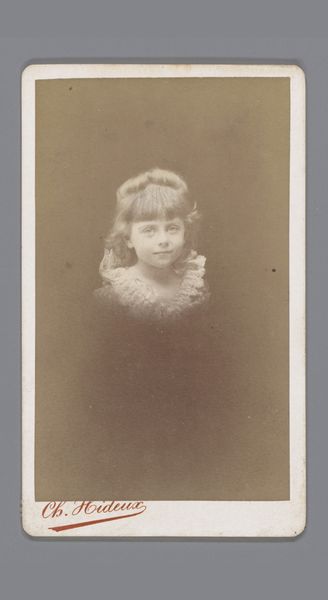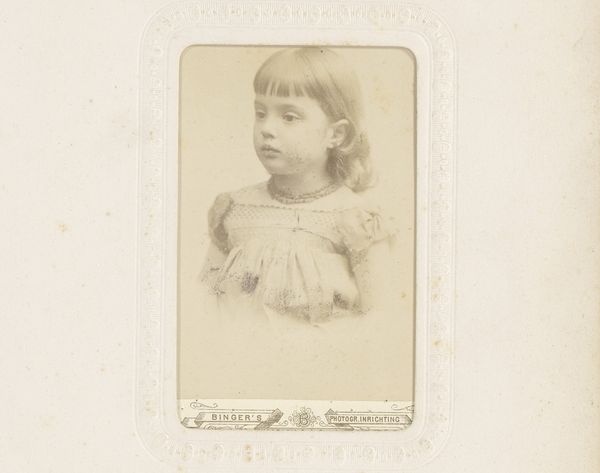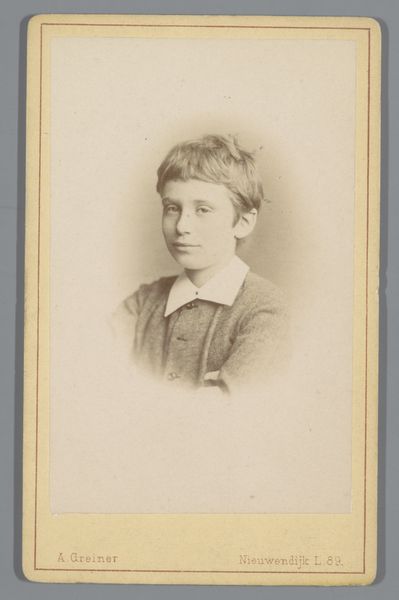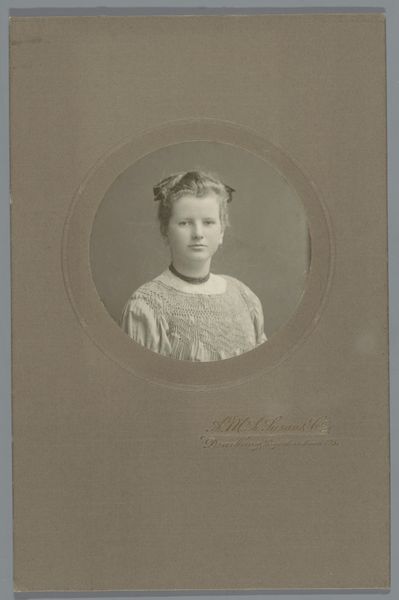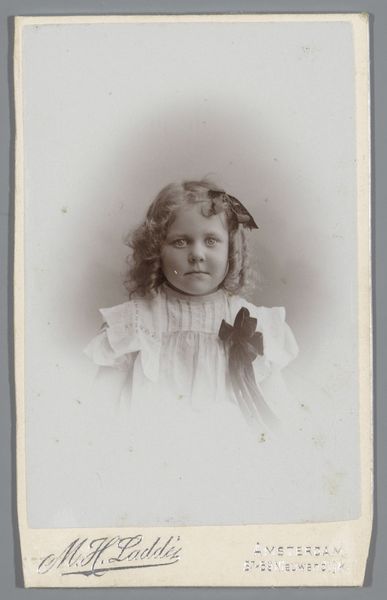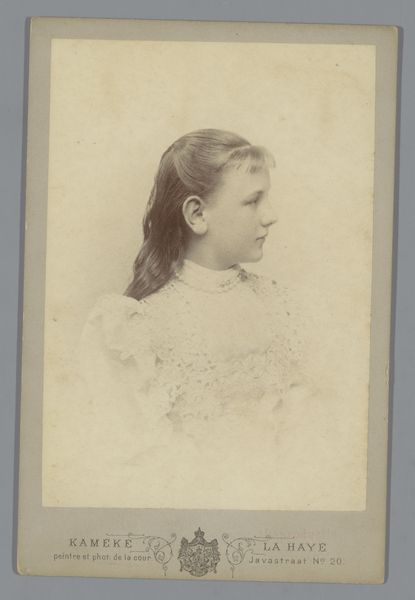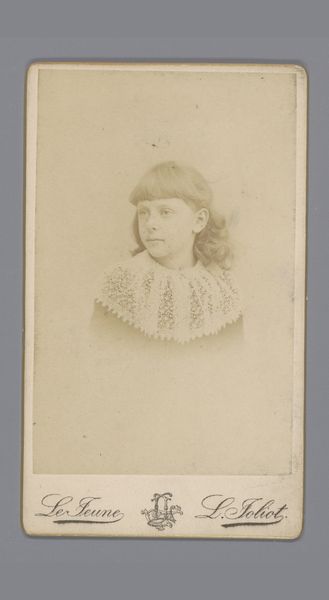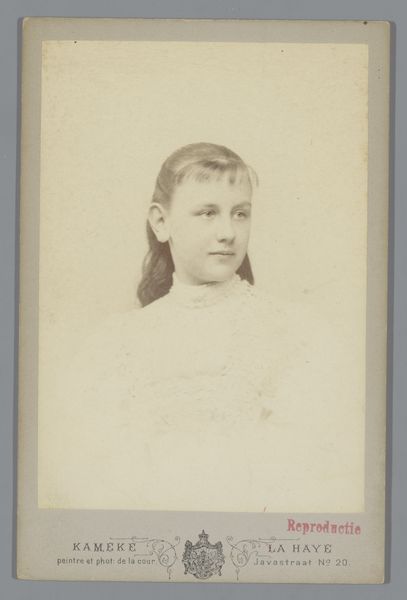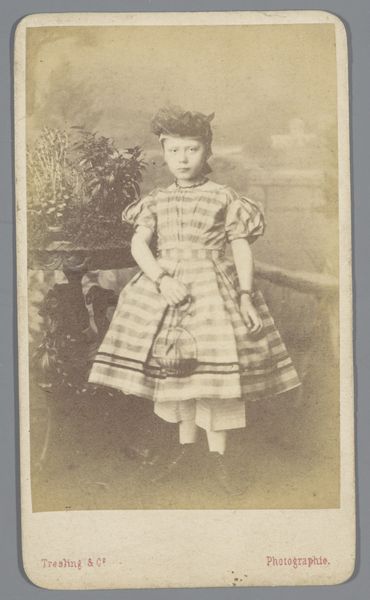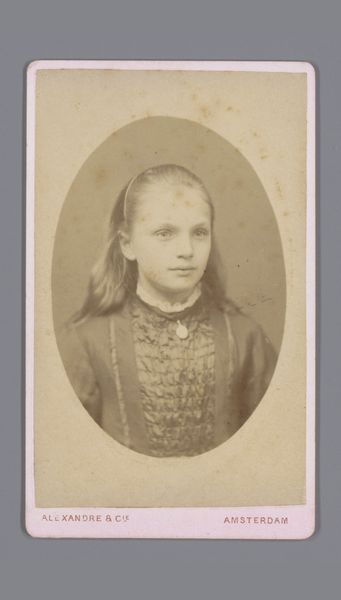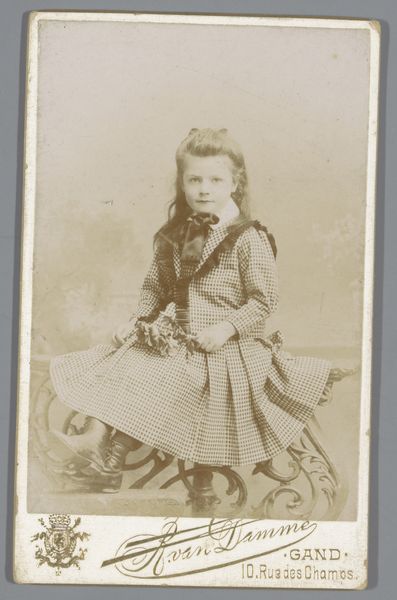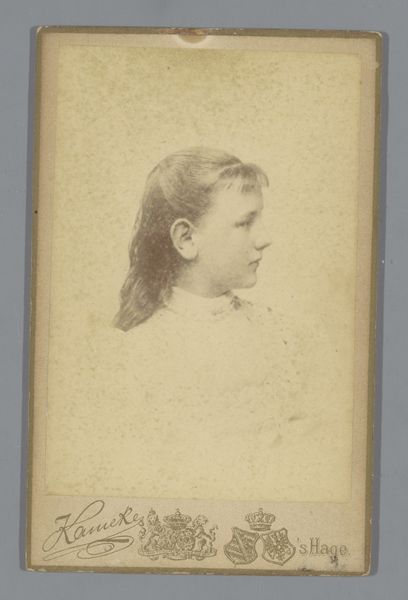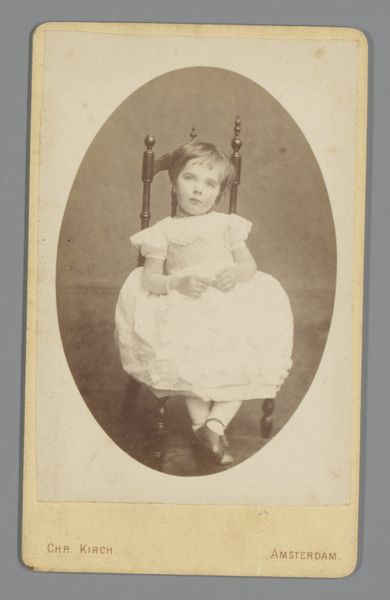
photography, gelatin-silver-print
#
portrait
#
photography
#
gelatin-silver-print
Dimensions: height 104 mm, width 65 mm
Copyright: Rijks Museum: Open Domain
Curator: Here we see "Portret van een onbekend meisje" by Carel Eduard Westerborg, dating from between 1861 and 1915. It's a gelatin silver print photograph, a poignant example of late 19th, early 20th century portraiture now held at the Rijksmuseum. Editor: It has a fragile beauty. The soft sepia tones contribute to the feeling of a world suspended in time. There's something quite haunting in her eyes. Curator: Precisely. Photography, particularly portraiture, became a means of preserving memory and creating identity during that period. This gelatin silver print offers incredible detail for the era, allowing us to closely examine her features and clothing, capturing a specific moment. The girl appears demure but confident. Editor: I find myself questioning who she was, and the societal pressures she may have faced as a young woman coming of age in that era. Photography allowed for a democratizing force in representation. It gave visibility to the bourgeoisie and working class—and perhaps access to this image for family posterity. Curator: True. The subject’s gaze and expression would carry different symbolic weight then and now. She's not simply a subject, but almost an emblem for her generation. And what do you make of the slight imperfections visible at the bottom corners of the physical photograph? Editor: Ah, for me those marks contribute to the sense of lived history; material reminders of the object's journey. They invite questions about what was deemed "worth" preserving then and why we still assign value to these images. The photograph prompts conversations about photographic truth itself, which by then was already in crisis due to pictorialism. Curator: Absolutely. What strikes me is that it's so easy for us today to see, and yet to overlook how significant each photographic portrait, especially from this period, was. An expensive time consuming process memorializing the individual. What's fascinating to contemplate is how seemingly unremarkable details, like clothing and accessories, become time capsules filled with meanings about identity and social norms. Editor: Exactly. And viewing it now, we can analyze the historical contexts interwoven with her self-presentation—understanding not just an individual image but also a complex network of social and cultural codes. Curator: A perfect thought with which to leave our listeners. Editor: Agreed, offering a lens through which we may understand a girl, an era, and ourselves a little better.
Comments
No comments
Be the first to comment and join the conversation on the ultimate creative platform.
